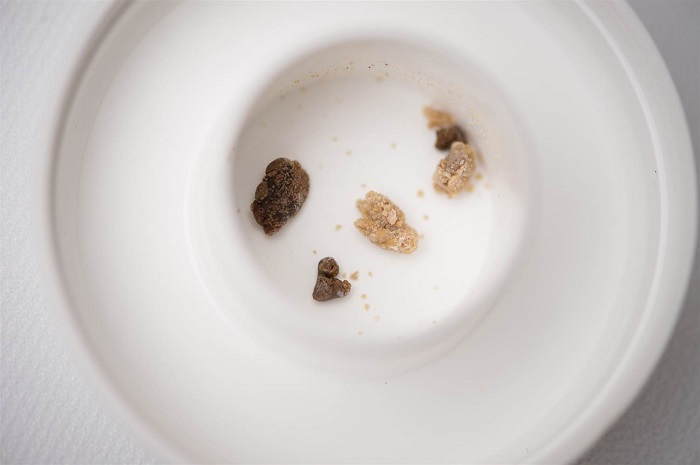He and a colleague, Dr. Marc Mitchell, had also seen some media reports about people who passed kidney stones while bungee jumping and riding roller coasters.
So they decided to leave East Lansing to head to Orlando in the name of medical research.
"It was a terrible burden," Wartinger said.
To simulate the human body as best they could, they made an artificial human kidney model out of clear silicone gel and loaded it up with real human kidney stones. They rode the roller coaster holding their kidney contraption between them in a backpack positioned at kidney height.
They took 20 rides and noted what happened to each kidney stone.
Riding in the back of the roller coaster train seemed to really knock the kidney stones out, they reported in The Journal of the American Osteopathic Association.
"Front seating on the roller coaster resulted in a passage rate of four of 24," they wrote.
"Rear seating on the roller coaster resulted in a passage rate of 23 of 36."
They are not sure what`s going on. Ear, nose and throat specialists know they can sometimes cure vertigo with what`s called the Epley maneuver to reposition little pieces of calcium called otoliths that can break loose in the ear. The maneuver is a precise series of movements meant to guide the floating pieces of grit back to where they belong inside the ear.
What happens on the roller coaster is anything but precise, Wartinger says. He describes it as "jostling your cookies." The idea is to get a small kidney stone out of the tubes that are inside the kidney and into the ureter -- the tube that takes the urine down to the bladder and out of the body.
Small is the key. Any stone bigger than 4 mm or 5 mm could get stuck. "That`s when you feel like you are giving birth to a porcupine," he said.
So anyone who wants to try this needs to see a doctor first.
They mainly tested the one roller coaster ride, and it`s a fairly simple one. "The Big Thunder Mountain roller coaster is not a terribly dynamic ride," Wartinger said. "It`s not very fast. It is not very tall. It makes sharp left and right turns that have some vibration."
Wartinger suspects many different thrill rides would have the same effect. "It`s not like there anything unique about this one coaster," he said.
The pair have now run their test 200 more times and say the findings are consistent. Now they want to try other amusement park rides.
But Wartinger says some people might give it a try right now. That includes people who know they have small kidney stones that will pass easily. "If you know you have a kidney stone and it is smaller than 4 mm, (you can try) going on a variety of amusement park thrill rides," he said.
Patients whose kidney stones have been broken up using ultrasound can try it too, Wartinger said.
As for Wartinger, he plans to continue his research. "I live in Michigan. I own an annual pass to Universal," he said, naming another theme park in Orlando that is part of the NBC family.
So far, there haven`t been severe side-effects. "Nobody threw up," he said. "You wake up the next morning and it feels like you have been in a car crash. By trip 20, the novelty is gone."
More about:
















































